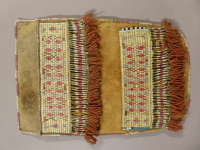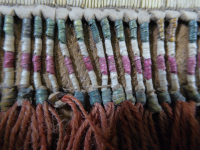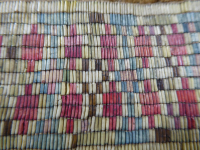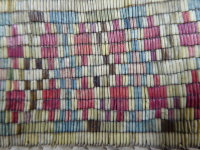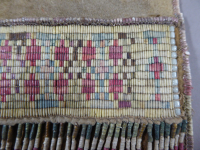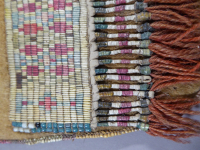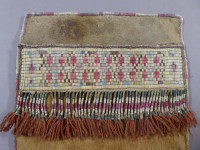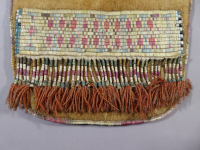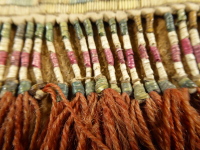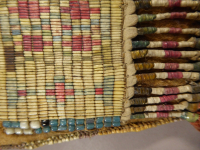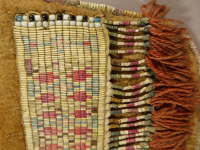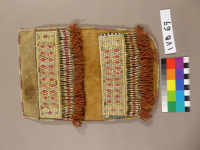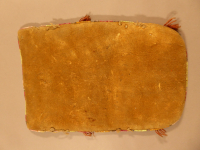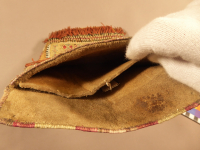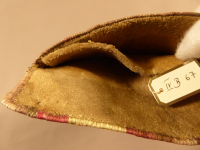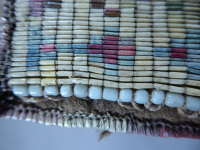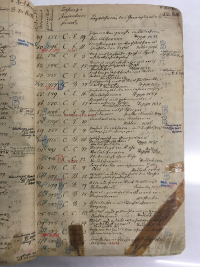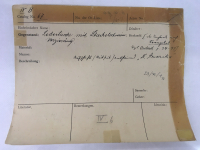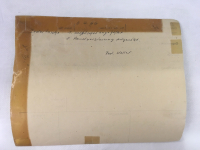pouch
pouch
pouch
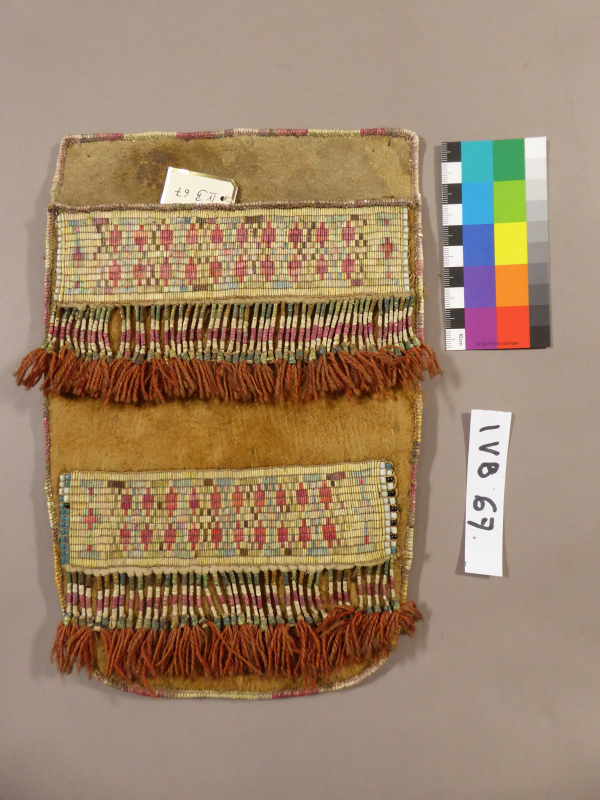
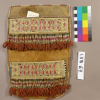


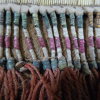
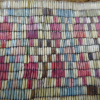
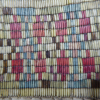
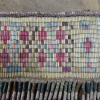
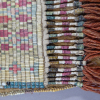
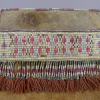
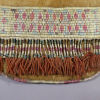
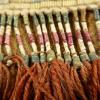
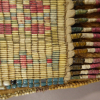
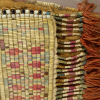
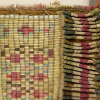
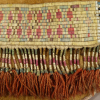
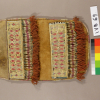
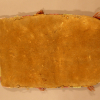
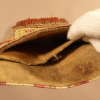
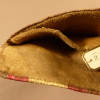
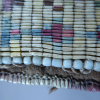
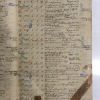
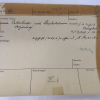
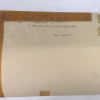
This rectangular, hide pouch has two pockets that each extend to the bottom of the bag. It has been decorated with two bands of loomed quillwork with designs created in yellow, white, red (now appears as pink), purple and blue (now blue/green). Each band was quill-wrapped thongs with tassels of wool yarn. Each band also has beaded edges: the to band has a single row of white beads on each end; the bottom band has two beads in a row on each end, variously white, two kinds of blue and black. The entire pouch is edged with quills, and GRASAC researchers noted the quillwork is so well done that it is not possible to tell if the pouch is one piece or two. There is no lining inside, and the back of the pouch is undecorated. Bags such as these are often identified with Northern Ontario, up to James Bay, and this pouch may be Mushkegowuk Cree.
This relative currently resides at the Ethnologisches Museum Berlin, Germany.
Mushkegowuk Cree?
GRASAC researchers are familiar with other bags with the two-rows of quill, and those are identified as Mushkegowuk Cree.
Museum documentation and GRASAC researcher notes
Read More About This Relative
hide; porcupine quill; wool yarn; sinew thread; natural dyes
Loomed quillwork. Using a magnifying glass, GRASAC researchers noted sinew thread was used to hold down the quillwrapped thongs and tassels. The terminal end of the fringe is a loop, with the yard passed through to make the tassels. The loop is hidden by the quill wrap.
Geometric patterns forming diamonds
Laura Peers, Alan Corbiere and Maureen Matthews discussed this pouch and compared it with IV-B-216 B (a single moccasin) because of the tags. Laura Peers noted that the fringe is associated with James Bay hoods. She thought that the fading of the pouch's colours may make the two relatives (the moccasin and this pouch) appear more similar than they are.
Laura Peers noted that GRASAC researchers Cath Oberholtzer and Ruth Phillips, as well as Jonathan King, have associated pouches likes this one with northern Ontario up to James Bay. There are Cree pouches in the collections of Pitt Rivers Museum, British Museum and National Museum of Ireland showing two rows of quills.
Peers observed that she has seen fringes being sewn down on the shoulders of coats; it appears to be a technique used by makers to extend the longevity of the decoration.
A handwritten tag with this pouch reads: Ohye Genauc/e Augbey/n
This information is the same as on the tag for IV-B-216 B (a single moccasin)
Given the muted colours on this pouch, Laura Peers believes the maker was using natural or pre-analine dyes. The broader date range for pouches such as these is 1800-1850.
Provenance
There is scant information on the catalogue card.
Museum documentation
The catalogue card may read "Orchard p. 34-37" (see photograph)
About This GRASAC Record
Cree Maker, Name Unknown. GRASAC ID 59174. Ethnologisches Museum Berlin, Catalogue Number IV-B-67.













Based on stylistic attributes, this pouch probably came from northern Ontario, toward James Bay. It's exact origin is unknown. The pin reflects a middle distance between Timmins, Ontario and James Bay, within Mushkegowuk territories.
 Knowledge Sharing Platform
Knowledge Sharing Platform


